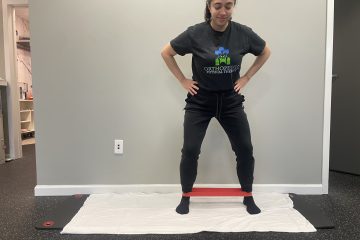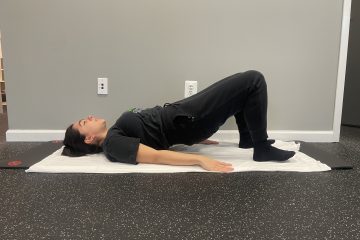“Pain in butt” is a phrase we throw around quite literally as a primarily pelvic health physical therapy practice.
I always refer to tailbone pain as “pesky” because it can come on suddenly, even without a discernible injury to said booty-bone, and dang if it just does not want to leave.
So how do symptoms of tailbone pain present and what are some common causes?
Symptoms:
- Pain with sitting
- Pain at the tip of the tailbone
- Pain with bowel movements
If these initial symptoms are not addressed, tailbone pain can lead to constipation, pain with intercourse, bladder urgency, bladder frequency, bladder pain, low back pain and pelvic pain.

Causes:
- Hypo OR Hyper-mobility in the tailbone (coccyx)*
- A fall on the tailbone
- Birth injury**
- Prolonged pressure on the tailbone
- Poor sitting posture
*Pelvic floor specialists assess the tailbone to determine whether it may be hypo or hyper.
**Birth injury/resultant tailbone pain can occur from laboring in any position but mainly happens when laboring on the back. In labor, the tailbone/coccyx needs to move out of the way so baby can descend and exit the birth canal. If laboring on the back, pressure on the sacrum/tailbone can block that movement, potentially stalling and/or causing difficulties in labor.
What do we do in pelvic floor PT for tailbone pain and how long is the recovery process?
In terms of what we do, posture and positioning is KEY 🔑! We as pelvic health specialists examine all your daily positions and make adjustments to them because although the hour a week you spend with us is pure magic, we still need to make sure the other 167 hours a week you spend outside of our office are helping and not hindering your recovery.
In our office and for your homework, we teach you stretches and mobilizations for the glutes, hips, and back (as well as performing them through manual therapy). We work to manage any constipation and/or adverse bladder signs and symptoms. We also help relax the pelvic floor muscles through internal work, generally going through the rectum but sometimes the vagina if needed and if the patient with tailbone pain has one.
After lengthening and relaxing the muscles, we move to strengthen the hips, glutes, core to ensure that the whole of the pelvic floor is functionally optimally moving forward.
On average, recovery for tailbone pain takes 4-6 months, which is longer than our typical 3 month LSR method, and so worth it to make sure this issue both goes away completely AND does not reoccur. You will get relief far before 4-6 months, but as with most things, progress is incremental.
We may have a starting place of not being able to sit without pain for longer than 1o minutes, and through our work at PT and the strategies we employ at home/work, we will increase you to sitting for 15 minutes, then 20-30, then 45, and so on. For road trips or plane travel, you’ll have an arsenal of stretches and strategies to use throughout so all the sitting doesn’t negatively impact you or cause you to regress.
Do not stress about the pain in your booty! We’ve got you. We know this is a frustrating injury to deal with, but we have got all the tools to get rid of the pain and make sure it doesn’t come back.
If you are dealing with tailbone pain or another nagging pain or injury that just won’t go away, book a FREE 10-minute consult call today. We know we can help you ✨
Be empowered in education,
OrthoPelvic Physical Therapy


